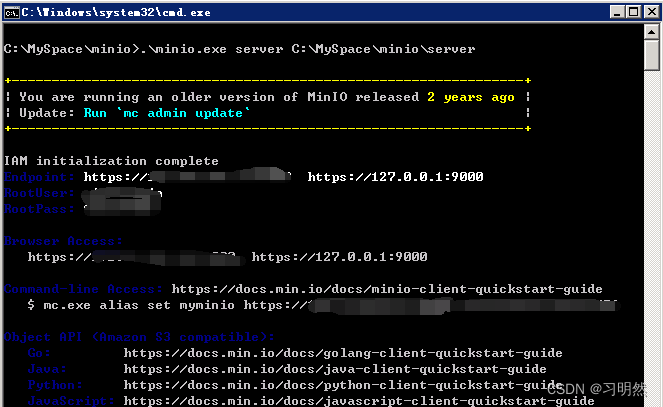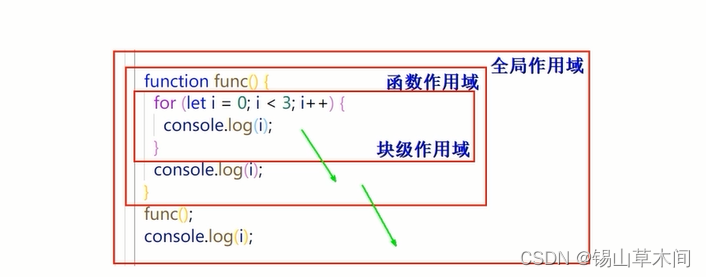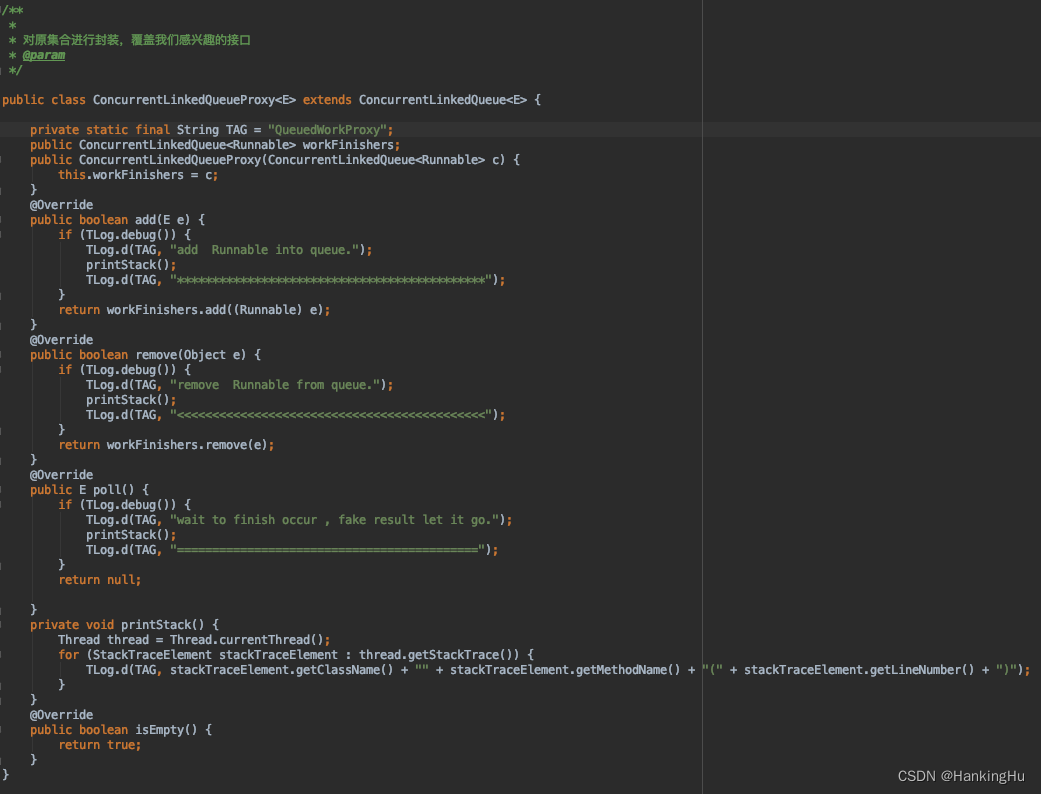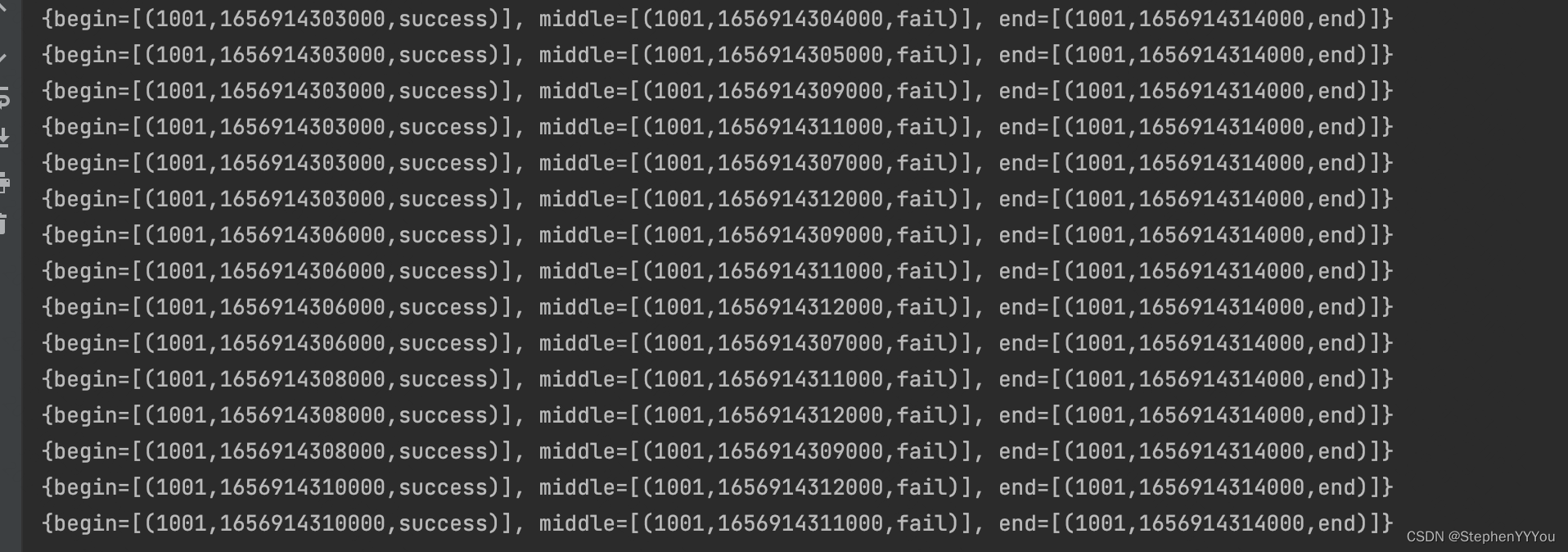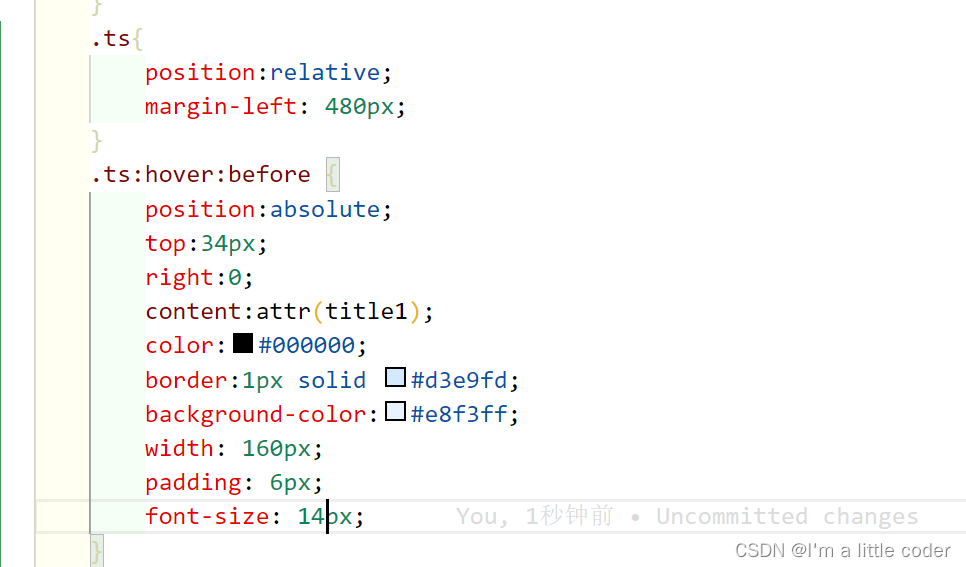第 1 章 Shell 概述

1)Linux 提供的 Shell 解析器有
[atguigu@hadoop101 ~]$ cat /etc/shells
/bin/sh
/bin/bash
/usr/bin/sh
/usr/bin/bash
/bin/tcsh
/bin/csh
2)bash 和 sh 的关系
[atguigu@hadoop101 bin]$ ll | grep bash
-rwxr-xr-x. 1 root root 941880 5 月 11 2016 bash
lrwxrwxrwx. 1 root root 4 5 月 27 2017 sh -> bash
3)Centos 默认的解析器是 bash
[atguigu@hadoop101 bin]$ echo $SHELL
/bin/bash
第 2 章 Shell 脚本入门
1)脚本格式
脚本以#!/bin/bash 开头(指定解析器)
2)第一个 Shell 脚本:helloworld.sh
(1)需求:创建一个 Shell 脚本,输出 helloworld
(2)案例实操:
[atguigu@hadoop101 shells]$ touch helloworld.sh
[atguigu@hadoop101 shells]$ vim helloworld.sh
在 helloworld.sh 中输入如下内容
#!/bin/bash
echo "helloworld"
(3)脚本的常用执行方式
第一种:采用 bash 或 sh+脚本的相对路径或绝对路径(不用赋予脚本+x 权限)
sh+脚本的相对路径
[atguigu@hadoop101 shells]$ sh ./helloworld.sh
Helloworld
sh+脚本的绝对路径
[atguigu@hadoop101 shells]$ sh /home/atguigu/shells/helloworld.sh
helloworld
bash+脚本的相对路径
[atguigu@hadoop101 shells]$ bash ./helloworld.sh
Helloworld
bash+脚本的绝对路径
[atguigu@hadoop101 shells]$ bash /home/atguigu/shells/helloworld.sh
Helloworld
第二种:采用输入脚本的绝对路径或相对路径执行脚本(必须具有可执行权限+x)
①首先要赋予 helloworld.sh 脚本的+x 权限
[atguigu@hadoop101 shells]$ chmod +x helloworld.sh
②执行脚本
相对路径
[atguigu@hadoop101 shells]$ ./helloworld.sh
Helloworld
绝对路径
[atguigu@hadoop101 shells]$ /home/atguigu/shells/helloworld.sh
Helloworld
注意:第一种执行方法,本质是 bash 解析器帮你执行脚本,所以脚本本身不需要执行
权限。第二种执行方法,本质是脚本需要自己执行,所以需要执行权限。
【了解】第三种:在脚本的路径前加上“.”或者 source
①有以下脚本
[atguigu@hadoop101 shells]$ cat test.sh
#!/bin/bash
A=5
echo $A
②分别使用 sh,bash,./ 和 . 的方式来执行,结果如下:
[atguigu@hadoop101 shells]$ bash test.sh
[atguigu@hadoop101 shells]$ echo $A
[atguigu@hadoop101 shells]$ sh test.sh
[atguigu@hadoop101 shells]$ echo $A
[atguigu@hadoop101 shells]$ ./test.sh
[atguigu@hadoop101 shells]$ echo $A
[atguigu@hadoop101 shells]$ . test.sh
[atguigu@hadoop101 shells]$ echo $A
5
原因:
前两种方式都是在当前 shell 中打开一个子 shell 来执行脚本内容,当脚本内容结束,则
子 shell 关闭,回到父 shell 中。
第三种,也就是使用在脚本路径前加“.”或者 source 的方式,可以使脚本内容在当前
shell 里执行,而无需打开子 shell!这也是为什么我们每次要修改完/etc/profile 文件以后,需
要 source 一下的原因。
开子 shell 与不开子 shell 的区别就在于,环境变量的继承关系,如在子 shell 中设置的
当前变量,父 shell 是不可见的。
第 3 章 变量
3.1 系统预定义变量
1)常用系统变量
H
O
M
E
、
HOME、
HOME、PWD、
S
H
E
L
L
、
SHELL、
SHELL、USER 等
2)案例实操
(1)查看系统变量的值
[atguigu@hadoop101 shells]$ echo $HOME
/home/atguigu (2)显示当前 Shell 中所有变量:set
[atguigu@hadoop101 shells]$ set
BASH=/bin/bash
BASH_ALIASES=()
BASH_ARGC=()
BASH_ARGV=()
3.2 自定义变量
1)基本语法
(1)定义变量:变量名=变量值,注意,=号前后不能有空格
(2)撤销变量:unset 变量名
(3)声明静态变量:readonly 变量,注意:不能 unset
2)变量定义规则
(1)变量名称可以由字母、数字和下划线组成,但是不能以数字开头,环境变量名建
议大写。
(2)等号两侧不能有空格
(3)在 bash 中,变量默认类型都是字符串类型,无法直接进行数值运算。
(4)变量的值如果有空格,需要使用双引号或单引号括起来。
3)案例实操
(1)定义变量 A
[atguigu@hadoop101 shells]$ A=5
[atguigu@hadoop101 shells]$ echo $A
5
(2)给变量 A 重新赋值
[atguigu@hadoop101 shells]$ A=8
[atguigu@hadoop101 shells]$ echo $A
8
(3)撤销变量 A
[atguigu@hadoop101 shells]$ unset A
[atguigu@hadoop101 shells]$ echo $A
(4)声明静态的变量 B=2,不能 unset
[atguigu@hadoop101 shells]$ readonly B=2
[atguigu@hadoop101 shells]$ echo $B
2
[atguigu@hadoop101 shells]$ B=9
-bash: B: readonly variable
(5)在 bash 中,变量默认类型都是字符串类型,无法直接进行数值运算
[atguigu@hadoop102 ~]$ C=1+2
[atguigu@hadoop102 ~]$ echo $C
1+2
(6)变量的值如果有空格,需要使用双引号或单引号括起来
[atguigu@hadoop102 ~]$ D=I love banzhang
-bash: world: command not found
[atguigu@hadoop102 ~]$ D="I love banzhang"
[atguigu@hadoop102 ~]$ echo $D
I love banzhang
(7)可把变量提升为全局环境变量,可供其他 Shell 程序使用
export 变量名
[atguigu@hadoop101 shells]$ vim helloworld.sh
在 helloworld.sh 文件中增加 echo $B
#!/bin/bash
echo "helloworld"
echo $B
[atguigu@hadoop101 shells]$ ./helloworld.sh
Helloworld
发现并没有打印输出变量 B 的值。
[atguigu@hadoop101 shells]$ export B
[atguigu@hadoop101 shells]$ ./helloworld.sh
helloworld
2
3.3 特殊变量
3.3.1 $n
1)基本语法
$n (功能描述:n 为数字,$0 代表该脚本名称,$1-
9
代表第一到第九个参数,十以上的参数,十以上的参数需要用大括号包含,如
9 代表第一到第九个参数,十以 上的参数,十以上的参数需要用大括号包含,如
9代表第一到第九个参数,十以上的参数,十以上的参数需要用大括号包含,如{10})
2)案例实操
[atguigu@hadoop101 shells]$ touch parameter.sh
[atguigu@hadoop101 shells]$ vim parameter.sh
#!/bin/bash
echo '==========$n=========='
echo $0
echo $1
echo $2
[atguigu@hadoop101 shells]$ chmod 777 parameter.sh
[atguigu@hadoop101 shells]$ ./parameter.sh cls xz
==========$n==========
./parameter.sh
cls
xz3.3.2 $#
1)基本语法
$# (功能描述:获取所有输入参数个数,常用于循环,判断参数的个数是否正确以及
加强脚本的健壮性)。
2)案例实操
[atguigu@hadoop101 shells]$ vim parameter.sh
#!/bin/bash
echo '==========$n=========='
echo $0
echo $1
echo $2
echo '==========$#=========='
echo $#
[atguigu@hadoop101 shells]$ chmod 777 parameter.sh
[atguigu@hadoop101 shells]$ ./parameter.sh cls xz
==========$n==========
./parameter.sh
cls
xz
==========$#==========
2
3.3.3
∗
、
*、
∗、@
1)基本语法
∗
(功能描述:这个变量代表命令行中所有的参数,
* (功能描述:这个变量代表命令行中所有的参数,
∗(功能描述:这个变量代表命令行中所有的参数,*把所有的参数看成一个整体)
@
(功能描述:这个变量也代表命令行中所有的参数,不过
@ (功能描述:这个变量也代表命令行中所有的参数,不过
@(功能描述:这个变量也代表命令行中所有的参数,不过@把每个参数区分对待)
2)案例实操
[atguigu@hadoop101 shells]$ vim parameter.sh
#!/bin/bash
echo '==========$n=========='
echo $0
echo $1
echo $2
echo '==========$#=========='
echo $#
echo '==========$*=========='
echo $*
echo '==========$@=========='
echo $@
[atguigu@hadoop101 shells]$ ./parameter.sh a b c d e f g
==========$n==========
./parameter.sh
a
b
==========$#==========
7
==========$*==========
a b c d e f g
==========$@==========
a b c d e f g
3.3.4 $?
1)基本语法
$? (功能描述:最后一次执行的命令的返回状态。如果这个变量的值为 0,证明上一
个命令正确执行;如果这个变量的值为非 0(具体是哪个数,由命令自己来决定),则证明
上一个命令执行不正确了。)
2)案例实操
判断 helloworld.sh 脚本是否正确执行
[atguigu@hadoop101 shells]$ ./helloworld.sh
hello world
[atguigu@hadoop101 shells]$ echo $?
0
第 4 章 运算符
1)基本语法
“$((运算式))” 或 “$[运算式]” 2)案例实操:
计算(2+3)* 4 的值
[atguigu@hadoop101 shells]# S=$[(2+3)*4]
[atguigu@hadoop101 shells]# echo $S
第 5 章 条件判断
1)基本语法
(1)test condition
(2)[ condition ](注意 condition 前后要有空格)
注意:条件非空即为 true,[ atguigu ]返回 true,[ ] 返回 false。
2)常用判断条件
(1)两个整数之间比较
-eq 等于(equal) -ne 不等于(not equal)
-lt 小于(less than) -le 小于等于(less equal)
-gt 大于(greater than) -ge 大于等于(greater equal)
注:如果是字符串之间的比较 ,用等号“=”判断相等;用“!=”判断不等。
(2)按照文件权限进行判断
-r 有读的权限(read)
-w 有写的权限(write)
-x 有执行的权限(execute)
(3)按照文件类型进行判断
-e 文件存在(existence)
-f 文件存在并且是一个常规的文件(file)
-d 文件存在并且是一个目录(directory)
3)案例实操
(1)23 是否大于等于 22
[atguigu@hadoop101 shells]$ [ 23 -ge 22 ]
[atguigu@hadoop101 shells]$ echo $?
0
(2)helloworld.sh 是否具有写权限
[atguigu@hadoop101 shells]$ [ -w helloworld.sh ]
[atguigu@hadoop101 shells]$ echo $?
0
(3)/home/atguigu/cls.txt 目录中的文件是否存在
[atguigu@hadoop101 shells]$ [ -e /home/atguigu/cls.txt ]
[atguigu@hadoop101 shells]$ echo $?
1
(4)多条件判断(&& 表示前一条命令执行成功时,才执行后一条命令,|| 表示上一
条命令执行失败后,才执行下一条命令)
[atguigu@hadoop101 ~]$ [ atguigu ] && echo OK || echo notOK
OK
[atguigu@hadoop101 shells]$ [ ] && echo OK || echo notOK
notOK
第 6 章 流程控制(重点)
6.1 if 判断
1)基本语法
(1)单分支
if [ 条件判断式 ];then
程序
fi
或者
if [ 条件判断式 ]
then
程序
fi
(2)多分支
if [ 条件判断式 ]
then
程序
elif [ 条件判断式 ]
then
程序
else
程序
fi
注意事项:
①[ 条件判断式 ],中括号和条件判断式之间必须有空格
②if 后要有空格
2)案例实操
输入一个数字,如果是 1,则输出 banzhang zhen shuai,如果是 2,则输出 cls zhen mei,
如果是其它,什么也不输出。
[atguigu@hadoop101 shells]$ touch if.sh
[atguigu@hadoop101 shells]$ vim if.sh
#!/bin/bash
if [ $1 -eq 1 ]
then
echo "banzhang zhen shuai"
elif [ $1 -eq 2 ]
then
echo "cls zhen mei"
fi
[atguigu@hadoop101 shells]$ chmod 777 if.sh
[atguigu@hadoop101 shells]$ ./if.sh 1
banzhang zhen shuai
6.2 case 语句
1)基本语法
case $变量名 in
“值 1”)
如果变量的值等于值 1,则执行程序 1
;;
“值 2”)
如果变量的值等于值 2,则执行程序 2
;;
…省略其他分支…
)
如果变量的值都不是以上的值,则执行此程序
;;
esac
注意事项:
(1)case 行尾必须为单词“in”,每一个模式匹配必须以右括号“)”结束。
(2)双分号“;;”表示命令序列结束,相当于 java 中的 break。
(3)最后的“)”表示默认模式,相当于 java 中的 default。
2)案例实操
输入一个数字,如果是 1,则输出 banzhang,如果是 2,则输出 cls,如果是其它,输出
renyao。
[atguigu@hadoop101 shells]$ touch case.sh
[atguigu@hadoop101 shells]$ vim case.sh
!/bin/bash
case $1 in
"1")
echo "banzhang"
;;
"2")
echo "cls"
;;
*)
echo "renyao"
;;
esac
[atguigu@hadoop101 shells]$ chmod 777 case.sh
[atguigu@hadoop101 shells]$ ./case.sh 1
1
6.3 for 循环
1)基本语法 1
for (( 初始值;循环控制条件;变量变化 ))
do
程序
done
2)案例实操
从 1 加到 100
[atguigu@hadoop101 shells]$ touch for1.sh
[atguigu@hadoop101 shells]$ vim for1.sh
#!/bin/bash
sum=0
for((i=0;i<=100;i++))
do
sum=$[$sum+$i]
done
echo $sum
[atguigu@hadoop101 shells]$ chmod 777 for1.sh
[atguigu@hadoop101 shells]$ ./for1.sh
5050
3)基本语法 2
for 变量 in 值 1 值 2 值 3…
do
程序
done
4)案例实操
(1)打印所有输入参数
[atguigu@hadoop101 shells]$ touch for2.sh
[atguigu@hadoop101 shells]$ vim for2.sh
#!/bin/bash
#打印数字
for i in cls mly wls
do
echo "ban zhang love $i"
done
[atguigu@hadoop101 shells]$ chmod 777 for2.sh
[atguigu@hadoop101 shells]$ ./for2.sh
ban zhang love cls
ban zhang love mly
ban zhang love wls
(2)比较
∗
和
*和
∗和@区别
∗
和
*和
∗和@都表示传递给函数或脚本的所有参数,不被双引号“”包含时,都以$1
2
…
2 …
2…n
的形式输出所有参数。
[atguigu@hadoop101 shells]$ touch for3.sh
[atguigu@hadoop101 shells]$ vim for3.sh
#!/bin/bash
echo '=============$*============='
for i in $*
do
echo "ban zhang love $i"
done
echo '=============$@============='
for j in $@
do
echo "ban zhang love $j"
done
[atguigu@hadoop101 shells]$ chmod 777 for3.sh
[atguigu@hadoop101 shells]$ ./for3.sh cls mly wls
=============$*=============
banzhang love cls
banzhang love mly
banzhang love wls
=============$@=============
banzhang love cls
banzhang love mly
banzhang love wls 当它们被双引号“”包含时,$*会将所有的参数作为一个整体,以“$1 $2 …$n”的形式输
出所有参数;$@会将各个参数分开,以“$1” “$2”…“$n”的形式输出所有参数。
[atguigu@hadoop101 shells]$ vim for4.sh
#!/bin/bash
echo '=============$*============='
for i in "$*"
#$*中的所有参数看成是一个整体,所以这个 for 循环只会循环一次
do
echo "ban zhang love $i"
done
echo '=============$@============='
for j in "$@"
#$@中的每个参数都看成是独立的,所以“$@”中有几个参数,就会循环几次
do
echo "ban zhang love $j"
done
[atguigu@hadoop101 shells]$ chmod 777 for4.sh
[atguigu@hadoop101 shells]$ ./for4.sh cls mly wls
=============$*=============
banzhang love cls mly wls
=============$@=============
banzhang love cls
banzhang love mly
banzhang love wls
6.4 while 循环
1)基本语法
while [ 条件判断式 ]
do
程序
done
2)案例实操
从 1 加到 100
[atguigu@hadoop101 shells]$ touch while.sh
[atguigu@hadoop101 shells]$ vim while.sh
#!/bin/bash
sum=0
i=1
while [ $i -le 100 ]
do
sum=$[$sum+$i]
i=$[$i+1]
done
echo $sum
[atguigu@hadoop101 shells]$ chmod 777 while.sh
[atguigu@hadoop101 shells]$ ./while.sh
5050
第 7 章 read 读取控制台输入
1)基本语法
read (选项) (参数)
①选项:
-p:指定读取值时的提示符;
-t:指定读取值时等待的时间(秒)如果-t 不加表示一直等待
②参数
变量:指定读取值的变量名
2)案例实操
提示 7 秒内,读取控制台输入的名称
[atguigu@hadoop101 shells]$ touch read.sh
[atguigu@hadoop101 shells]$ vim read.sh
#!/bin/bash
read -t 7 -p "Enter your name in 7 seconds :" NN
echo $NN
[atguigu@hadoop101 shells]$ ./read.sh
Enter your name in 7 seconds : atguigu
atguigu
第 8 章 函数
8.1 系统函数
8.1.1 basename
1)基本语法
basename [string / pathname] [suffix] (功能描述:basename 命令会删掉所有的前
缀包括最后一个(‘/’)字符,然后将字符串显示出来。
basename 可以理解为取路径里的文件名称
选项:
suffix 为后缀,如果 suffix 被指定了,basename 会将 pathname 或 string 中的 suffix 去掉。
2)案例实操
截取该/home/atguigu/banzhang.txt 路径的文件名称。
[atguigu@hadoop101 shells]$ basename /home/atguigu/banzhang.txt
banzhang.txt
[atguigu@hadoop101 shells]$ basename /home/atguigu/banzhang.txt .txt
banzhang
8.1.2 dirname
1)基本语法
dirname 文件绝对路径 (功能描述:从给定的包含绝对路径的文件名中去除文件名
(非目录的部分),然后返回剩下的路径(目录的部分))
dirname 可以理解为取文件路径的绝对路径名称
2)案例实操
获取 banzhang.txt 文件的路径。
[atguigu@hadoop101 ~]$ dirname /home/atguigu/banzhang.txt
/home/atguigu
8.2 自定义函数
1)基本语法
[ function ] funname[()]
{
Action;
[return int;]
}
2)经验技巧
(1)必须在调用函数地方之前,先声明函数,shell 脚本是逐行运行。不会像其它语言一
样先编译。
(2)函数返回值,只能通过$?系统变量获得,可以显示加:return 返回,如果不加,将
以最后一条命令运行结果,作为返回值。return 后跟数值 n(0-255)
3)案例实操
计算两个输入参数的和
[atguigu@hadoop101 shells]$ touch fun.sh
[atguigu@hadoop101 shells]$ vim fun.sh
#!/bin/bash
function sum()
{
s=0
s=$[$1+$2]
echo "$s"
}
read -p "Please input the number1: " n1;
read -p "Please input the number2: " n2;
sum $n1 $n2;
[atguigu@hadoop101 shells]$ chmod 777 fun.sh
[atguigu@hadoop101 shells]$ ./fun.sh
Please input the number1: 2
Please input the number2: 5
7

